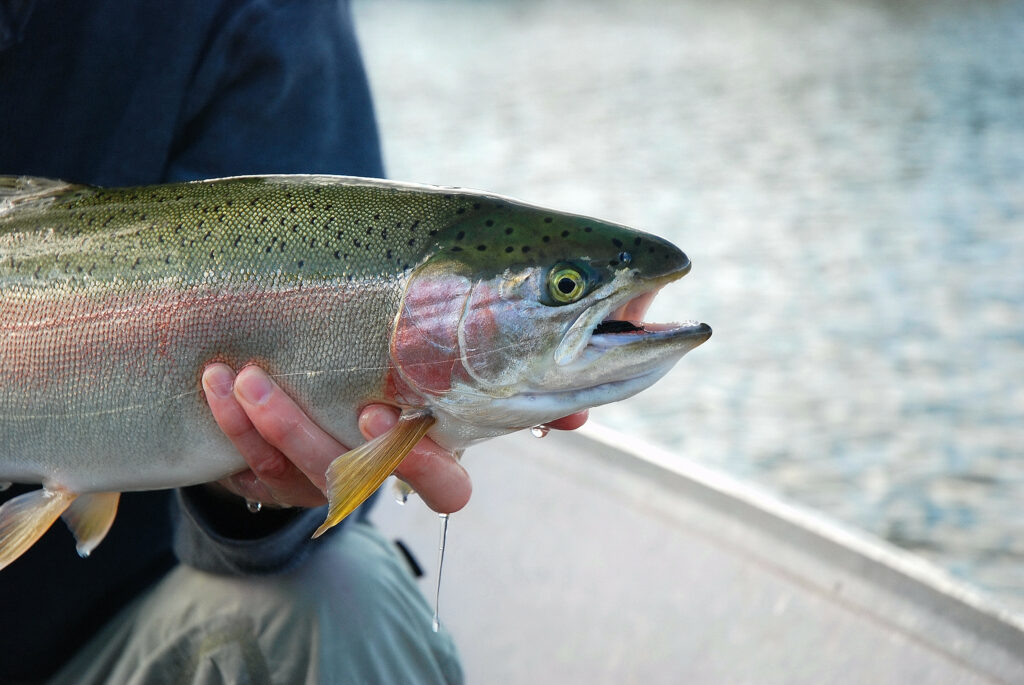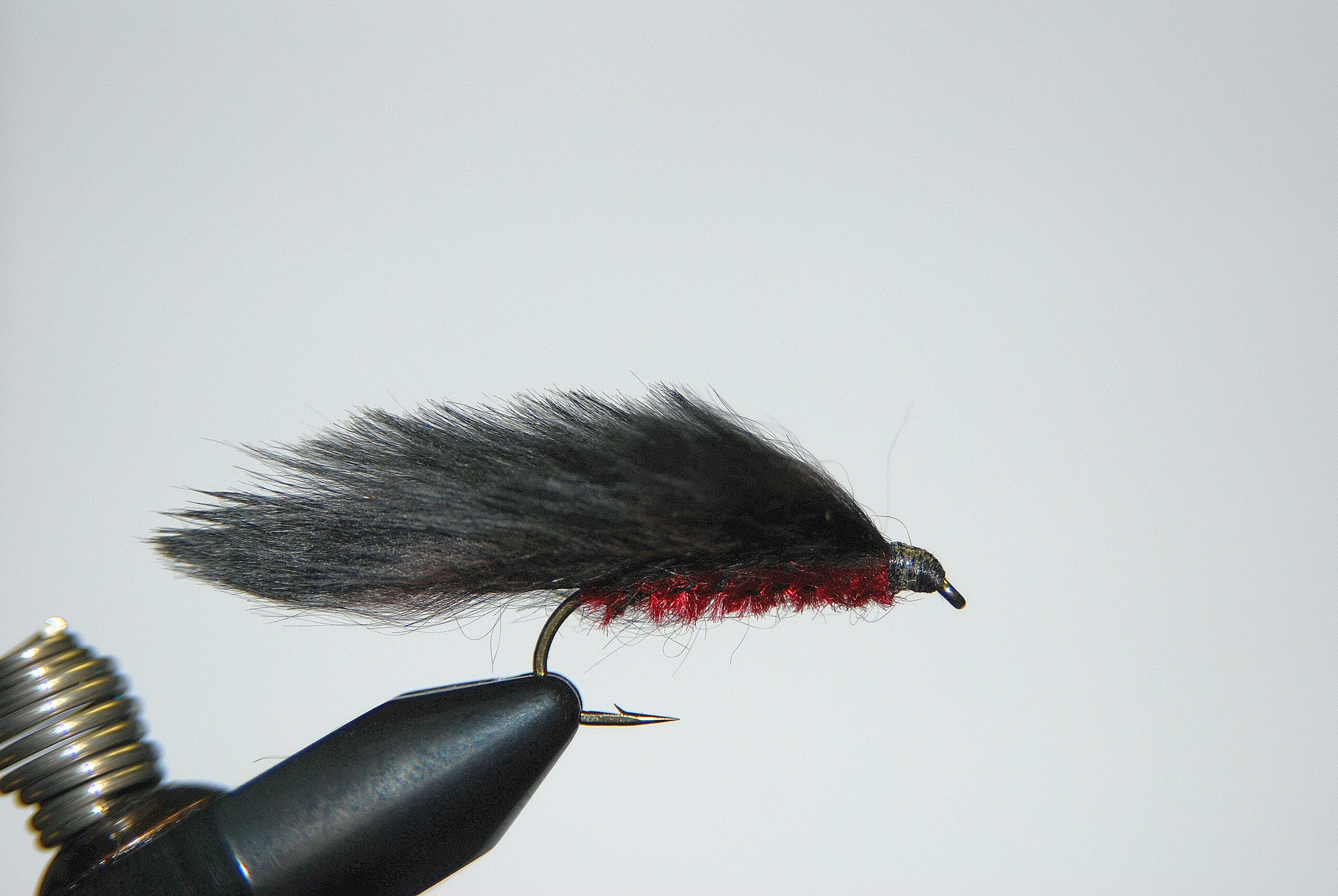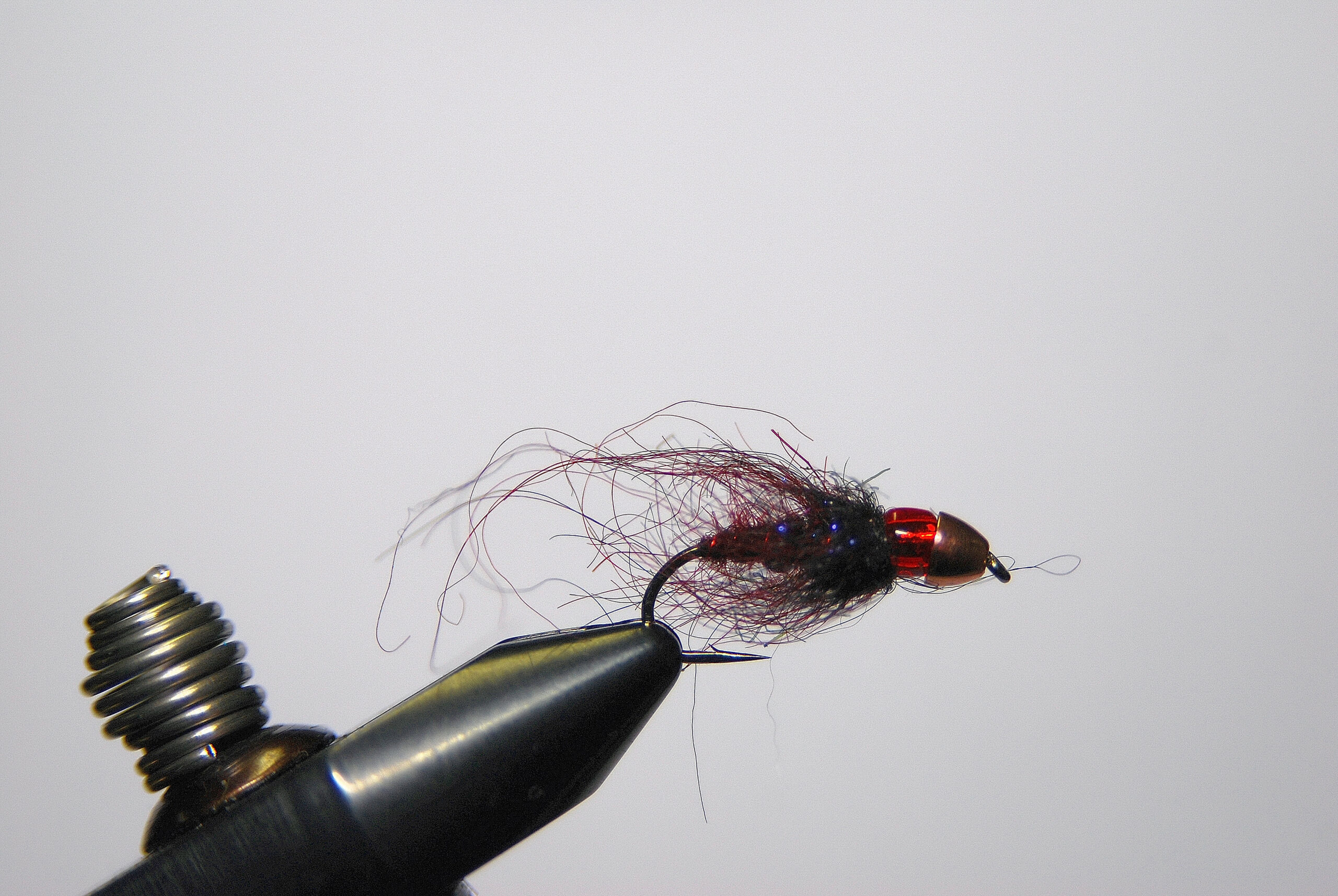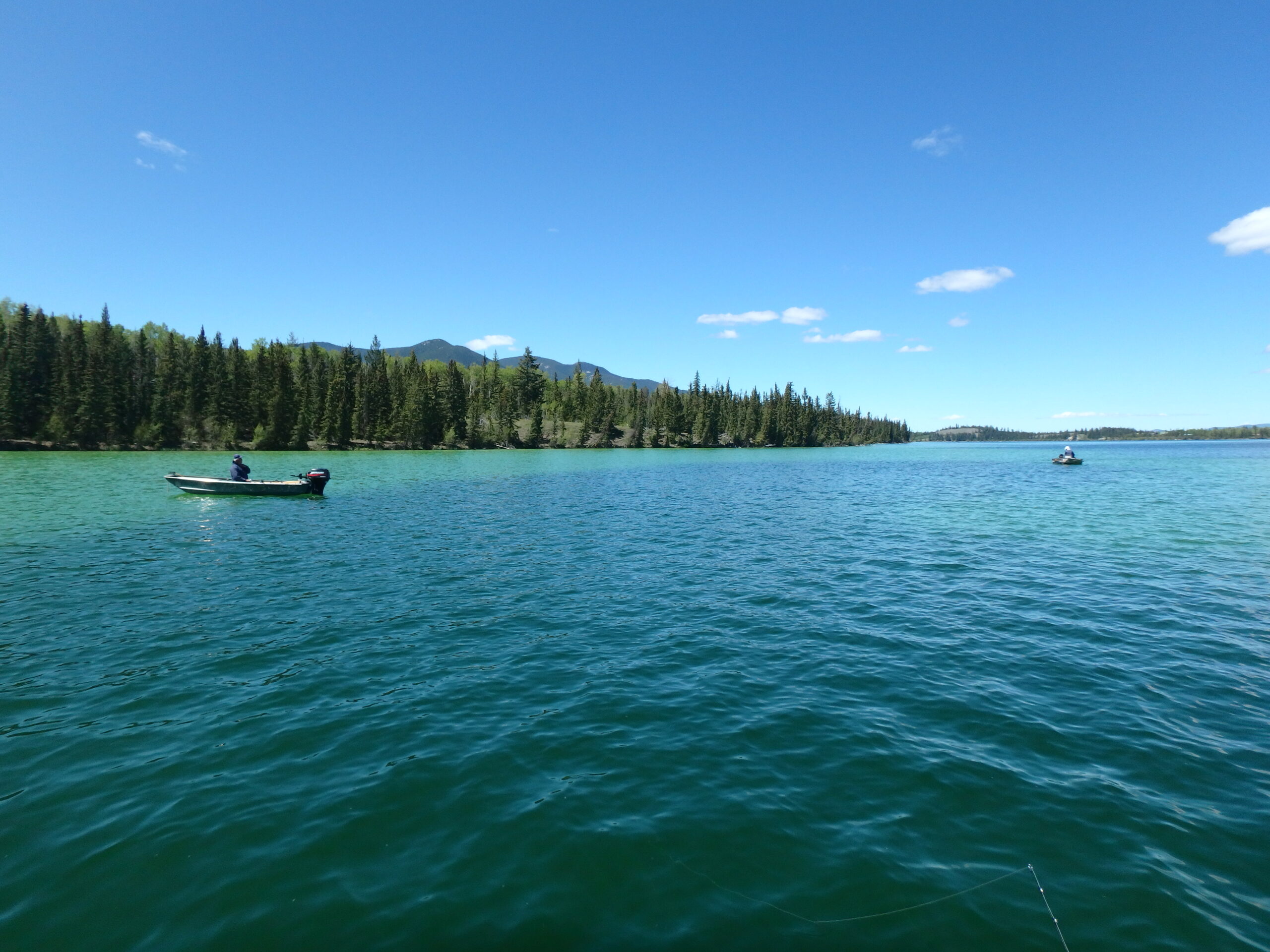Destination Reports, Expert Advice, General
Leeches | Must Have Imitations For Every Fly Box
When other anglers ask me what my favorite insect imitations are when fishing interior lakes, I always reply with leeches and dragon nymphs as these are excellent searcher imitations due to their size and availability. I know many anglers would beg to differ as chironomids are also extremely productive in our interior lakes but sometimes you just need a break from staring at an indicator all day. I have already covered dragonfly nymphs on this website back in June of 2023 –LINK so this feature will cover leeches and why they rank so highly on my list of product interior imitations.

If ever there was a fly that could entice a fish to strike year-round regardless of the time of day or weather conditions, it would undoubtedly be a leech pattern. Leech imitations are productive for many reasons including the fact they are very recognizable to fish as they are available in lakes year-round.

When it comes to leech imitations the possibilities of patterns are literally endless. I feel that the popularity of leeches is because they are easy to fish regardless of your skill levels. When anglers first make the transition from gear fishing to fly-fishing, one of the first flies they often use are leech patterns as they can be fished in numerous different ways with great success.


Must have leech patterns
As with most insect imitations, the possibilities that leeches can be tied in is literally endless. The size of leeches can vary greatly as micro leeches can be as small as a size 12 while trolling leeches can be as large as a size 4. When it comes to leeches the most important characteristic is they must be sleek in the water to entice a fish to strike. Bushy leeches can catch fish, but I have found sparse patterns are more productive overall.

As leeches are one of the most popular imitations in our interior lakes, there is a wide variety to choose from on the market today. Popular leeches include micro leeches, balanced leeches, ruby-eye leeches, pumpkin head leeches and the latest craze is vampire leeches to name a few. Below are five of the most productive leeches I have used over the years with great success.

“Maroon Sparkle Leech” hook size #10-6
When fishing in slightly colored lakes such as Tunkwa and Leighton the maroon sparkle leech stands out and attracts fish when other patterns are hard to see in the darker water. Due to the size and sparkle of this fly, it works very well as a searching pattern when trying to locate fish in a large body of water. The maroon color and sparkle are also highly productive when pursuing brook trout in our interior lakes. In fact, this is my go-to fly when targeting brook trout in lakes that contain them. This fly is easy to tie with a minimum of materials and time required. The body is made with maroon sparkle chenille with the wing is made from maroon marabou. I also add a half dozen strands of red crystal hair to the wing to give the fly a little sparkle in the water.


“Black Mink Leech” hook size #10-6
Of all the leeches I have fished over the years this one tops my list for productivity. I primarily fish the mink leech behind a type 6 quick sinking line retrieved quickly along the transitions of shoals. Over the years I have also found that this is an excellent pattern to use when sight fishing on the shoals as it sinks quickly and can be retrieved as soon as it hits the water. When retrieving this pattern, the soft mink fur breathes in the water making it look very realistic. This fly is also productive when trolled as its size and appearance stands out in clear lakes. If you cannot find mink fur, rabbit can also be used, but mink is definitely my first choice, as the fur has a slight sheen to it.

“Ruby Eye Leech” hook size #12-8
This leech works well year-round but is best fished early in the year on shoals in clear lakes. When using in shallower water a floating line and long leader can be used due to the fact the fly sinks quickly. This leech can also be fished under an indicator on windy days when the surface is broken. I find this fly very productive when fished in water from eight to twelve feet deep using a type 3 sinking line.

“Bead Head Micro Leech” hook size #14-10
This small fly is productive when fished under an indictor on calm or windy days. It is also a must-have pattern for fall fishing on shoals with an intermediate line. Productive colors include black, grey and maroon to mention a few. This fly should be tied on with a loop knot, as it allows it to swim with erratic movement in the water. I have found a productive way to fish this fly is with a floating line and a long leader along the transitions of shoals. This imitation should be tied small and sparse with a gold or silver bead and ribbing. The key to its success is its sleek appearance in the water.

“Vampire Leech” hook size #10-6
The Vampire leech is a relatively new pattern in the Stillwater game. Similar flies have been used for years but over the past couple years this has been a staple amongst Stillwater anglers. The body can be tied with a variety of materials including dubbing, but the two prominent characteristics of this fly are a dark body and a bright chartreuse bead. This fly works well in the spring and fall when trout are in shallow water aggressively looking for food. A relatively quick retrieve works best for this imitation when targeting fish in depths from ten to twenty feet deep.


When leeches are best fished
The best characteristic about leeches is the fact they are productive year-round in nearly
any interior lake. As real leeches are always present in lakes all we as anglers must figure out is
the right color and size that works on a specific day. When selecting a pattern, check out the
shoreline first and try to imitate the real ones in that specific body of water. If that doesn’t
work, then start playing with colors. The four most productive leech colors include black,
brown, green and maroon but don’t be afraid to experiment with other colors like purple and
grey. As for the most productive time of year for fishing leeches, I find spring and fall the best as
many of the other insects are limited or not available.


Next time you find yourself on a lake and nothing seems to be working, try a couple different leech patterns, you may be pleasantly surprised with the outcome of such a simple imitation.

Tom Johannesen
Tom Johannesen grew up fishing but at the age of 23 he had his first article published in a British Columbia Federation of Fly Fishers (BCFFF) newsletter and something changed.
Since that first article, Tom has been on a mission to master his craft and to share what he has learned with others. With over 200 articles published in magazines like BC Sport Fishing, BC Outdoors, Outdoor Edge, Canadian Fly Fisher, Home Waters, Reel Angler, Western Angler and Island Fisherman, it’s clear that it’s a mission he takes seriously. He also regularly hosts seminars and tutorials at fly clubs and shops in the hopes of lighting that spark in the next generation.


